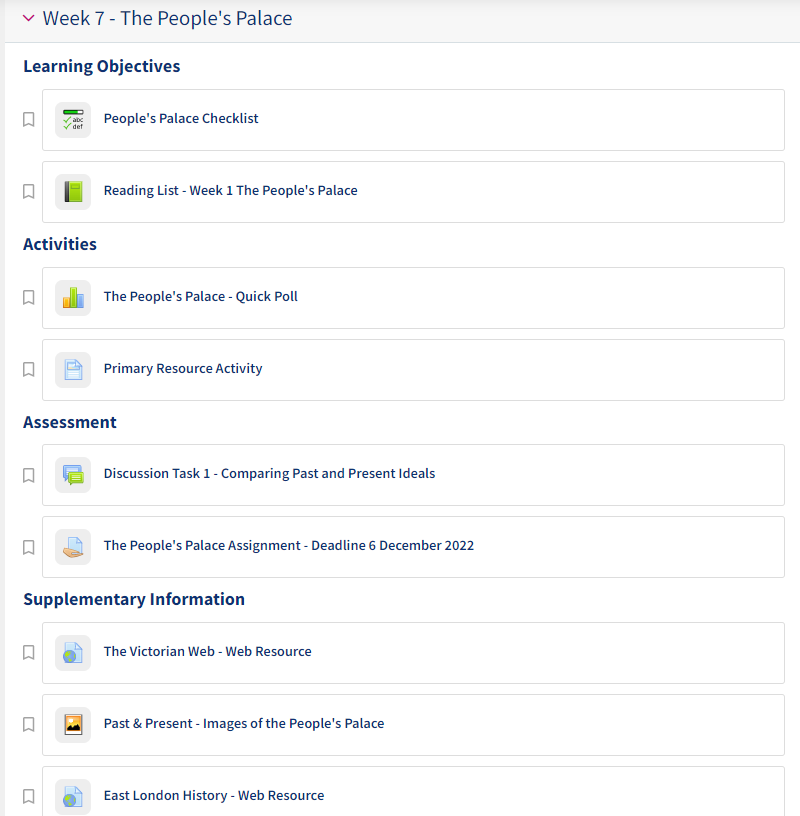Structure and signpost content
Students access QMplus multiple times a day to check their module areas for new content, watch lecture recording on Q-Review, access reading lists or get involved in an online discussion. It is important that we design our module areas so that information is structured simply and clearly making it easy to navigate and find information quickly. Long lists of files are particularly difficult to navigate.
Take a look below at a topic called The People’s Palace in a fictitious module.
All the learning content for the module is listed in a linear fashion in a disorganised way making it very hard for a student to understand what they should look at or do in what order. Is this an assessment? Should I read this? Which is most important? Should I go through this in a sequence? What should I do first?
In the second example exactly the same content has been organised into clearly signposted sub-sections within the main section.
- You may notice a few activities in the example that you have not seen before..
- Use a checklist activity (Moodle doc) to help students keep track of what they need to do.
- the second is the reading list provided by the the Reading List Online system run by the library.
- The other is the lightbox gallery: Creating a Lightbox Gallery (Moodle doc)
Organising content like this is very easy to do and you can find more information in this guide: Adding text, images and video using a label (Moodle doc)
Other tips
- Use the reporting functionality in QMplus to find out what your students have been doing with your content. How many times has that supplementary material been used? If students aren’t making use of resources, why might that be?
- Use the description on activities and resources to give students more information about them.
- Use activity completion and the progress bar to steer students through resources and activities and allow them to keep on track
- Use groups to ensure that students only see the content that is relevant to them thereby reducing clutter and cognitive load. See our user guide on Using groups.
- Delete old content. If you are not using things, delete them. Keeping hold of old content will slow your QMplus area down…even if it is hidden from students. Remember that we have the QMplus archives going back 5 years.




